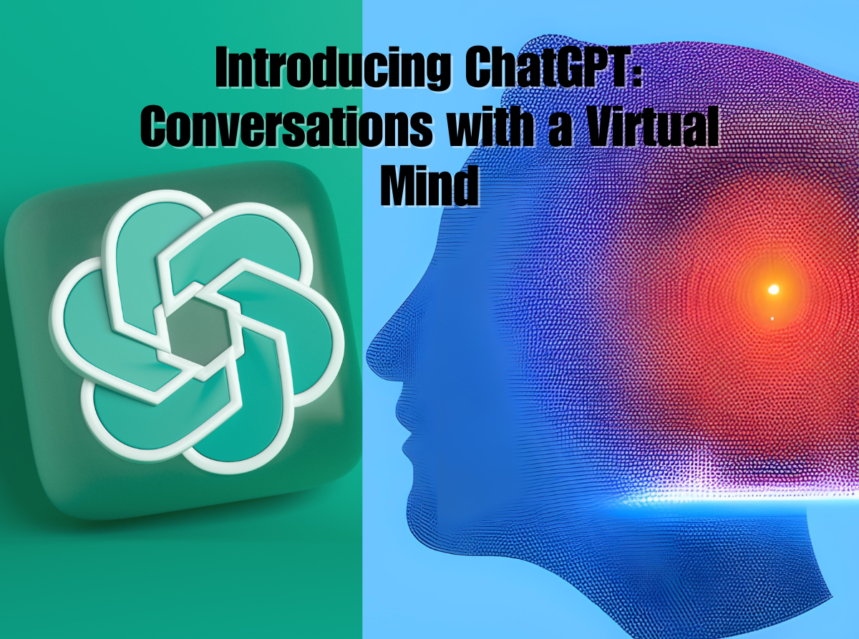Introducing ChatGPT: Power Of Positive Conversations with a Virtual Mind



Welcome to the exciting world of ChatGPT! In this blog post, we are going to take a deep dive into the fascinating technology that is shaping conversations and interactions with AI-powered virtual assistants. Whether you are a newbie to the concept of AI or a seasoned researcher, this article will provide you with valuable insights, tips, and explanations about ChatGPT.
What is ChatGPT?
ChatGPT is a state-of-the-art language model developed by OpenAI. It is designed to generate human-like text based on the prompts it receives. Powered by deep learning, ChatGPT has been trained on vast amounts of data to produce coherent and contextually relevant responses.
Imagine interacting with an intelligent virtual person who can help answer your questions, engage in discussions, and offer informative suggestions. That’s what ChatGPT aims to achieve, making conversations with AI as natural as talking to a real human.
How does ChatGPT work?
To understand how ChatGPT works, it’s essential to explore its underlying architecture. At its core, ChatGPT employs a technique known as transformer-based models. These models utilize attention mechanisms to capture the context and dependencies between words in a sentence.
The training process involves exposing the model to enormous amounts of text data, allowing it to learn patterns and correlations. As a result, ChatGPT can generate text that is remarkably coherent and realistic. However, it’s important to note that the model doesn’t possess true understanding or consciousness but mimics human-like responses based on statistical patterns.
The Evolution of ChatGPT
ChatGPT AI is a product of continuous advancements in natural language processing (NLP). OpenAI has made significant efforts to refine the model over time, releasing various versions with iterative improvements.
One key milestone in this journey was the release of GPT-2, which garnered widespread attention due to its ability to generate compelling and persuasive text. GPT-2 raised concerns about the potential misuse of such technology, prompting OpenAI to take a cautious approach to its deployment.
To further address these concerns, subsequent versions of GPT, including ChatGPT, were developed with the ability to refuse certain outputs deemed inappropriate or harmful. This creates a balance between AI capabilities and user safety, shaping the vision of a useful and responsible AI assistant.
Conversations with ChatGPT
When engaging in a conversation with ChatGPT, providing clear and concise prompts is essential. The prompt you give to the model sets the context for its responses. You can start with a simple prompt such as “Tell me a joke,” or you can engage in more complex discussions by stating your preferred topic.
It’s important to remember that while ChatGPT can generate impressive and contextually appropriate responses most of the time, there may be instances where it fails to convey accurate information. It’s always a good idea to critically analyze the responses and verify the information obtained from ChatGPT.


Steps To Use ChatGPT
- Sign up: Go to the website chat.openai.com. Login or Sign up for free.
- Open the chat interface: Once you’re logged in, find the chat interface. It’s usually a space where you can type and have a conversation with ChatGPT.
- Start the conversation: Type in your question or prompt to begin the conversation with ChatGPT. Make sure to be clear and concise in your instructions so that ChatGPT understands what you’re asking.
- Review the response: ChatGPT will generate a response based on your input. Take a moment to read and understand what it has provided.
- Make adjustments if necessary: While ChatGPT is helpful, it’s not perfect. If you think the response needs improvement or doesn’t fully answer your question, you can edit it or ask for more information.
- Continue the conversation: Carry on the conversation by asking follow-up questions or providing additional prompts. This will help you explore different topics or gather more information from ChatGPT.
- Experiment and try different approaches: Feel free to experiment with various prompts and ways of asking questions. This can help you get better and more accurate responses from ChatGPT.
- Be respectful and follow guidelines: Remember to communicate with ChatGPT respectfully and adhere to the platform’s guidelines. Treat it like a conversation with a helpful AI friend!
By following these steps, you can make the most out of your ChatGPT experience and have engaging and informative conversations.
Tips for Interacting with ChatGPT
To make the most out of your interactions with ChatGPT, here are some practical tips:
Ask Clear and Specific Questions
To obtain accurate and relevant responses, try to ask clear and specific questions. Ambiguity in your prompts might lead to less satisfactory answers. Providing concise context around your query helps the model better understand what you are looking for.
Keep it Personal
ChatGPT AI can handle personal pronouns, which makes it ideal for personalized exchanges. Utilize this feature to create more engaging and interactive conversations. For example, you could say, “What is your favorite movie?” or “Tell me a story about yourself.”
Be Wary of Potentially Inaccurate or Biased Responses
While ChatGPT AI is designed to provide helpful and informative responses, it is not immune to inaccuracies or biases present in its training data. Exercise critical thinking and cross-reference information obtained from ChatGPT with other reliable sources whenever necessary.
Limitations and Ethical Considerations
As with any technology, ChatGPT has its limitations and ethical considerations. It’s important to be aware of these aspects to ensure the responsible use of AI-driven conversational systems.
Lack of True Understanding
While ChatGPT can generate coherent and contextually relevant responses, it lacks genuine understanding or consciousness. It is essential to remember that the model operates based on patterns and correlations present in its training data.
Potential for Bias
AI models are highly dependent on the data they are trained on. If the training data contains biases, ChatGPT may inadvertently exhibit biased behavior in its responses. Efforts are underway to mitigate biases, but it remains an ongoing challenge.
Responsible Use
AI must be used responsibly to avoid potential harm. ChatGPT, though heavily controlled and filtered, may occasionally produce inappropriate or harmful responses. OpenAI has designed measures to reduce such outputs, but cautious usage is still necessary.
The Future of ChatGPT
ChatGPT represents one of the many advancements in AI that have the potential to transform the way we interact with technology. While there are limitations and ethical considerations, the continuous development of AI models like ChatGPT brings exciting possibilities.
OpenAI has plans to refine and expand upon ChatGPT’s capabilities, leveraging user feedback and insights. By incorporating a wider range of perspectives and refining its training data, the aim is to create even more reliable AI conversations.
You May also like to read about the Top 7 Must-Have Ai Tools
FAQs:
1. What makes ChatGPT different from traditional chatbots?
ChatGPT stands out from traditional chatbots due to its ability to generate human-like responses using deep learning techniques. It is not limited to pre-programmed rules and can adapt to various conversation contexts.
2. Can ChatGPT understand and respond in multiple languages?
While ChatGPT’s primary training is in English, it can be fine-tuned to understand and respond in multiple languages with the appropriate training data and resources.
3. Is ChatGPT suitable for small businesses?
Yes, ChatGPT is well-suited for small businesses as it offers cost-effective customer support solutions and enhances user experience without the need for significant infrastructure or resources.
4. How does ChatGPT ensure data privacy and security?
OpenAI follows strict data privacy and security protocols to protect user information. Implementing appropriate safeguards and encryption measures ensures the confidentiality and integrity of data processed by ChatGPT.
5. Can ChatGPT handle complex queries and provide accurate responses?
While ChatGPT performs admirably in many scenarios, it may struggle with highly technical or nuanced queries. In such cases, human oversight or specialized systems may be necessary to ensure accurate responses.
6. Is ChatGPT available for personal use?
Yes, OpenAI offers access to ChatGPT through various plans, including free access for general use. Users can enjoy the benefits of ChatGPT for personal projects or exploratory purposes.
Conclusion
ChatGPT has opened up new avenues for engaging and informative conversations with virtual minds. As we’ve discussed in this blog post, it is an impressive technology that learns from vast amounts of data to generate human-like responses.
While ChatGPT offers great potential, it’s crucial to remain mindful of its limitations and to use it responsibly. As AI technology progresses, ongoing efforts to address biases and enhance models like ChatGPT will contribute to a more versatile and reliable conversational AI experience.
So, the next time you find yourself talking to a virtual assistant or engaging in an AI-powered conversation, remember the remarkable progress that ChatGPT AI represents. Enjoy exploring the world of virtual conversations and continue to be curious about the incredible possibilities that AI holds for our future.


